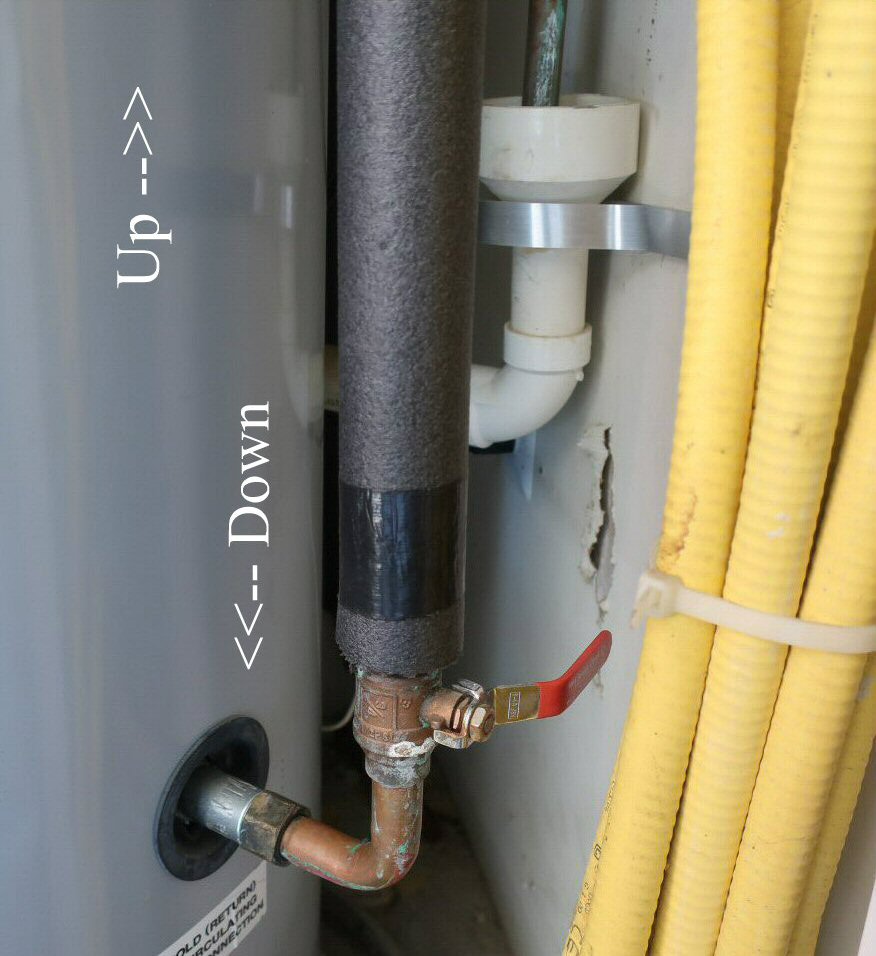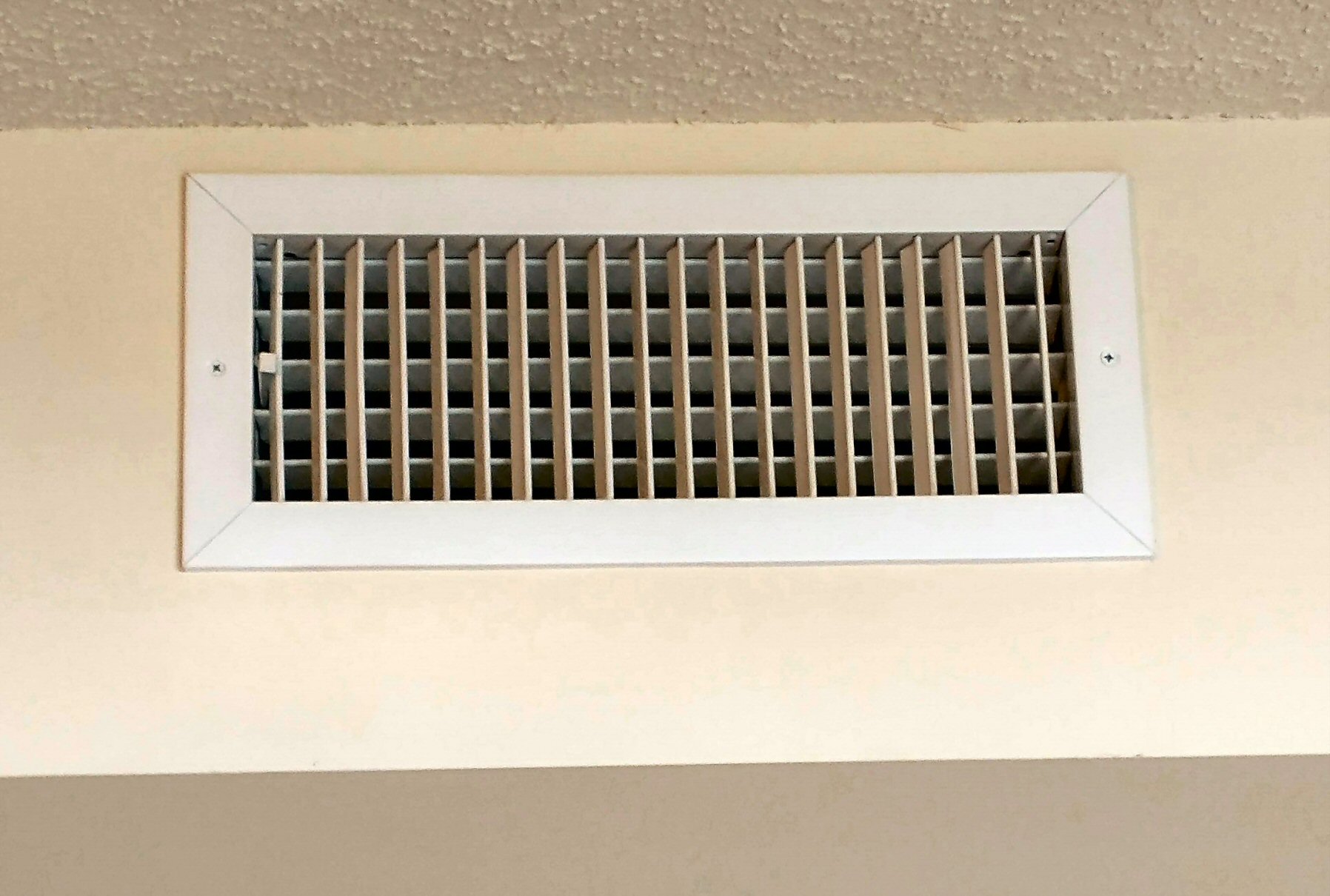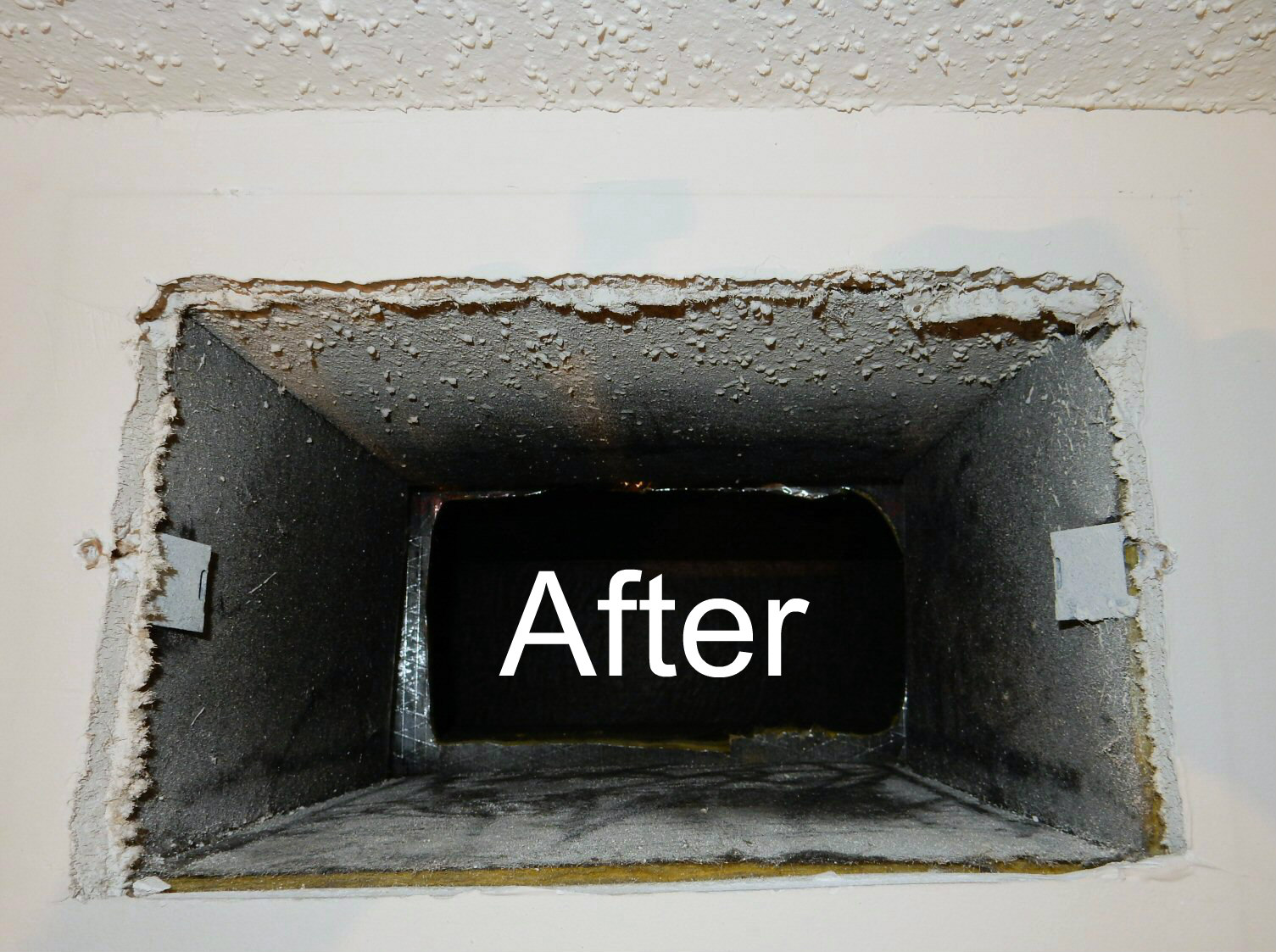Your HVAC System
Heating / Ventilating / Air Conditioning
Treat the comments below as general information:
Many original units have been replaced with slightly different equipment.
summer comfort
vents
air filters
fan noise
Water Heater
In May, I turn off the hot water that heats my condo. The photo shows my red-handled, quarter-turn valve in the OFF position (perpendicular to the piping) for the RETURN line. This will improve condo cooling in the summer. Do NOT use the "HEAT" setting on your thermostat when the RETURN valve is closed.
Some of our HVAC units require the RETURN valve to be turned OFF in order to provide adequate cooling in the summer. This is because the hot water circulating-pump keeps running, even when the thermostat is calling for cooling. This could be the result of a design flaw, improper installation, or incorrect thermostat wiring. But turning the RETURN valve OFF works! If you turn the wrong valve OFF you'll get no hot water out of your spigots.
After so many years, not all our units have the same equipment. But most have a line marked SUPPLY and a line marked RETURN, each with quarter-turn valve. Align both handles parallel to the pipes for winter heat.
Now we need to remember to turn the valve(s) back ON in September in order to get heat! Meanwhile, check to see that the emergency pressure-relief valve pipe is properly positioned in the white, plastic, funnel-drain as shown.

The Up and Down arrows will ensure that you are viewing the photo properly.
Your HVAC Vents!
This is almost unbelievable but there was some very sloppy, unsupervised work done when our buildings were first built. This will result in less than optimum heat distribution (room-to-room temperature variations) in your unit. To check, remove the 2 screws, remove the vent cover, and look inside.

When I removed my HVAC vents this is what I saw. (below)
It is easy to cut out the (foil-faced) fiberglass main duct with a knife and have full air flow. This should improve comfort and save money.

Almost everyone who checked, found a problem. I had this problem in both of my units in the East building. One resident (Jennifer) found there was no cut out at all. She had always wondered why that room never got cool.
Make no mistake: Your vents were designed to be cut out completely. Take a careful look at the photos. This is careless, shoddy, unsupervised work from when our units were built. You don't have be a graduate engineer with experience in HVAC Research and Development (like David), or ask an HVAC technician, or your landlord: Just look at the photos.
For more stories and photos from residents who have checked, go to the Eclipse Facebook page and put "HVAC Rathgeber" in the search box. (May 28, 2017)
HVAC Filters
From time to time, there are questions about HVAC filters. Yes, the ones that need to be changed occasionally. The purpose of a filter is to trap particles (dust, smoke, pollen, bacteria, viruses, allergens, etcetera) from the air and stop them from floating around aimlessly inside your condo. Then you will not inhale them, nor will they deposit on your furniture as dust. Having said that, all filters are not created equal. Some do a better job, which means they remove more particles than other filters. If you can see through the filter, like the inexpensive fiberglass type, it likely is not too effective. Some filters have ratings to indicate their efficiency: The MERV rating is the most common, and the popular 3-M Filtrete uses an MPR rating system. As you might suspect, the higher numbers indicate more efficient filtration.
Do filters restrict airflow? Of course they do. If air flow is your main concern, remove your filter, throw it in the dumpster, do not replace it at all, and save $100 or $200 a year. But a popular consumers magazine finds very few filters that restrict air flow significantly. Surprisingly, some of the least efficient filters, restrict air flow the most. It does not make sense to me either, but they do the testing.
HVAC Noise
You have probably noticed the noise produced by your HVAC fan, especially when it starts. Sound insulation can be added inside the enclosure where the fan is located; that is where you change the air-filter. The photo below shows the cold-air return HVAC panel with sound-absorbing foam applied to the inside surface.

Also, it possible to connect the HVAC fan motor to run at a slower speed than high speed, where it is set originally. This reduces noise when the fan starts as well as noise while it is running. At distance of 3 feet from the air intake, my unit registers 77 decibels upon startup and 38 decibels running if connected to medium speed; and registers 63 decibels upon startup and 33 decibels running if connected to slow speed. You can measure your unit's sound level with an app on your phone.
* * * * * * *
YFiRE
Your Friend in Real Estate, LLC
Arlington, Virginia, USA